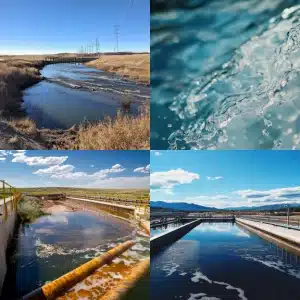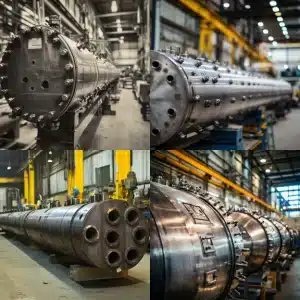
Mechanical failure analysis identifies root causes of equipment breakdowns through data collection, testing, and inspection. With Red River LLC’s expertise, you can improve safety, prevent recurrence, and ensure reliable, cost-efficient operations.
Mastering How to Perform Mechanical Failure Analysis
If you manage industrial equipment like pressure vessels or structural assemblies, you’ve likely wondered how to perform mechanical failure analysis effectively. A Red River LLC mechanical analysis helps identify root causes behind breakdowns, cracks, or malfunctions by reviewing past performance, testing materials, and assessing environmental factors. With the right approach and tools, you can prevent repeat failures, save costs, and keep operations efficient. Companies like Red River LLC apply advanced testing and inspection protocols to ensure reliable results, supporting safer, stronger, and more productive systems.
How to Perform Mechanical Failure Analysis
Mechanical failure analysis involves defining problems, collecting data, investigating causes, and recommending solutions. A Red River LLC mechanical analysis ensures accuracy, strengthens reliability, prevents recurrence, and improves safety across critical equipment, including pressure vessels.
Define the Scope
Clarify which component you are analyzing, what sort of damage has occurred, and how widespread the issue might be. Setting a clear focus at the start helps you avoid unnecessary detours later.
Gather Relevant Data
Collect all information related to the failure. This might include design specs, operational logs, maintenance records, and even user feedback. For example, if you suspect a pressure vessel issue, you might explore a targeted pressure vessel failure analysis to get more context.
Review the Design and Operational Conditions
Check whether the component was used in line with its original design purpose. Were there any extreme pressures, fluctuating loads, or temperature changes that exceeded specifications? Understanding the intended versus actual operating environment often reveals discrepancies.
Inspect the Failure Site in Detail
Examine the failed part visually. Look for cracks, corrosion, or unusual wear patterns. Document everything, including photos. For a more in-depth approach, you could consider a mechanical failure analysis procedure that follows industry standards for analyzing damaged surfaces.
Test Material Properties
Conduct laboratory tests on samples to measure strength, hardness, and other properties. If you uncover unusual weaknesses, you may also look at material failure analysis techniques, especially if the component involves metals prone to corrosion or fatigue.
Determine Root Cause
Analyze operational logs and lab results to find causes whether stress, weak materials, or multiple factors. Red River LLC ensures precision, improving reliability and pressure vessels safety through detailed mechanical failure analysis.
Recommend Solutions
Propose design improvements, staff training, or material changes to boost reliability. From minor adjustments to system redesigns, every step enhances performance while prioritizing pressure vessels safety in industrial operations.
Document and Share Findings
Write a thorough report that outlines your analysis, test results, conclusions, and any recommended changes. This record is central for long-term improvement, so future teams can learn from it.
By following this structure, you create a comprehensive framework that helps you figure out what went wrong and, more importantly, how to prevent it going forward.
Investigate Root Causes Thoroughly
Many mechanical breakdowns arise from a chain of smaller missteps. To truly understand where things went wrong, you will want to look at factors such as stress concentration, metallurgical defects, or improper assembly procedures. Red River LLC, known for designing and manufacturing industrial modules, emphasizes that consistent quality control traceability of materials and detailed testing, supports early identification of weak points. This is especially important for applications that demand compliance with stringent regulations.
Here are some root-causing tactics that can help:
- Conduct failure mode and effects analysis (FMEA): Reviewing each process step to see how it could fail helps you focus on the most vulnerable points. FMEA is a proactive approach that will save you from unplanned downtime.
- Use fractography for crack evaluation: By examining the fracture surface under magnification, you can narrow down whether failures originate from fatigue, overload, or environmental stress. For pressure vessels, you might also check what causes pressure vessel failure to highlight common triggers like corrosion or thermal cycling.
- Compare actual loads to design limits: Sometimes, usage patterns shift over time, with higher loads than the original design intended. Document every operational change to see if the equipment was pushed beyond recommended thresholds.
- Assess environmental or chemical factors: Heat, moisture, acidity, or extreme cold can weaken materials, accelerating damage over time. The environment is often overlooked but plays a massive role in mechanical degradation.
If you commit to a thorough root cause analysis, you are less likely to overlook hidden issues. This detailed approach saves money, reduces risks, and keeps uptime high.
Apply Testing and Validation Methods
Data doesn’t lie using destructive or non-destructive tests ensures accurate validation. Advanced diagnostics strengthen conclusions, making failure root cause analysis essential for reliable solutions in mechanical failure analysis and industrial safety.
Non-destructive Testing (NDT)
This category includes methods such as ultrasonic testing, radiography, and magnetic particle inspections. They reveal subsurface cracks, voids, or other hidden flaws without damaging the part. According to Red River LLC, performing checks in a controlled environment reduces the risks of environmental interference. That means you can spot defects more reliably.
Destructive Tests
- Tensile and impact tests: Pull or strike the sample to see how much stress it can endure before it fails. This method measures strength and toughness directly.
- Hardness measurements: A small indentation on the surface indicates the sample’s ability to resist wear. Hardness patterns can reveal localized weaknesses.
- Metallographic analysis: Polishing and etching the sample allows you to inspect the material structure under a microscope. You can detect grain boundary weaknesses, inclusions, or improper heat treatments. If you discover such problems, exploring metallurgical failure analysis may prove beneficial.
Environmental Simulations
Sometimes recreating operating conditions in a lab is crucial. Simulating heat or cold cycles helps confirm triggers, making failure root cause analysis more accurate for identifying weaknesses and preventing costly breakdowns.
Collaboration with Experts
Do not hesitate to involve specialized professionals for in-depth analyses. Red River LLC, for instance, prides itself on having a highly skilled workforce, continuous improvement protocols, and an extensive library of designs that can help verify solutions. Working alongside qualified experts can speed up your analysis and ensure accuracy. Their experience across oil and gas, power generation, and other industries allows them to spot anomalies quickly.
When you integrate these testing and validation strategies, your mechanical failure analysis gains a solid factual basis. You move beyond guesswork, building reliable conclusions that guide effective solutions.
How to Perform Mechanical Failure Analysis Effectively
You can master mechanical failure analysis by exploring the cause of each breakdown step by step. Start with a clear scope, gather every relevant detail, and systematically investigate how stress, materials, and the environment contributed. Then, confirm your suspicions with rigorous testing whether that means non-destructive methods or more hands-on destructive tests. Finally, wrap your findings into a detailed report that maps out your next steps.
Companies like Red River LLC highlight the importance of a disciplined approach and robust quality control. By following these best practices, you will not only uncover the root cause of failures but also design better processes and equipment for future success. Your diligence in pinpointing physical and procedural gaps pays off in stronger products, safer workplaces, and greater confidence in day-to-day operations.
Take Action with Red River LLC Today
Ready to protect your systems from costly breakdowns? Contact Red River LLC today to get expert support on how to perform mechanical failure analysis and build safer, more reliable operations. You can also request a quote to get started quickly.
Frequently Asked Questions
1. What is mechanical failure analysis?
Mechanical failure analysis is the process of identifying the root cause of equipment or component failure.
2. Why is mechanical failure analysis important?
Mechanical failure analysis is important because it prevents future breakdowns, improves safety, and reduces costly downtime.
3. Can I perform mechanical failure analysis without specialized equipment?
Begin with visual inspections and data review, then use specialized diagnostics.
4. What if my tests reveal design flaws?
Consult engineers or specialists to correct flaws with improved designs.
5. How can mechanical failure analysis improve safety?
Pinpoint causes to apply improvements, reducing future breakdown risks.
6. Should I involve an outside expert if I suspect a complex issue?
External experts catch overlooked issues in pressure vessels or composites.
7. What about cost implications?
Mechanical failure analysis saves money by preventing downtime and incidents.
Key Takeaways
- Collect detailed designs, repair logs, histories, and information clarifying failure conditions.
- Use destructive and non-destructive tests for complete strength and integrity insights.
- Identify root causes carefully; investigate overload, fatigue, corrosion, and design errors.
- Document findings clearly; concise reports speed fixes and guide future teams effectively.
- Partner with experts like Red River LLC for validation, prefabrication, and improvements.




